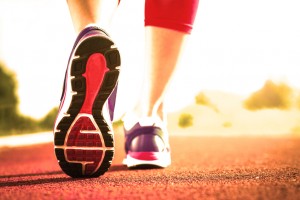It is clear that for many of us walking is the most basic and natural exercise. The human body was made for walking, and it is not only beneficial for our physical and mental health but also for our wallets. Walking costs us nothing but our time and a sturdy pair of walking shoes.
Regardless of age, weight or fitness level, walking is and will remain accessible to almost all. Rewarding in many ways, walking is a valuable ally for anyone wanting to reshape their body and/or lose weight. There is little traumatic impact and it is one of the least physically demanding forms of exercise for overweight people. The impact of walking on the body represents about 1.5 times the weight of your body, against 3-4 times the impact of running. There is also less risk of pain in the ankles, knees and hips in particular.
Walking is considered a cardio discipline. It improves the cardiovascular system and decreases the risk of heart disease, stroke, cholesterol and blood pressure. The benefits of walking make it an effective pre cursor to any other sport. For women, walking is a great way to reduce the risk of osteoporosis and heavy legs phenomenon because it stimulates venous return (the rate of blood flow back to the heart).
We walk twice as fast as when we run, but we spend two times less energy for the same period. However, unlike running, we can walk longer and without problems. For many running for over an hour seems unimaginable but walking for two or three hours is not daunting for most, yet the total energy expenditure is equal to or greater than running. A one hour walk can burn between 150 and 300 calories depending on your waking speed and your weight. Burning about 3,500 calories equals one pound of weight loss.
This weight loss may be considered negligible, but walking for two or three hours at a stretch is not mandatory. It is better to schedule walks during the week depending on the time available (e.g. 30 minutes in the morning to walk to work and 30 minutes to return). Try to use motorized transportation only for longer trips.
Walking barefoot on grass or sand strengthens all the muscles in the arches of your feet. These muscles have lost the habit of working because of wearing shoes, and walking barefoot will help restore your posture and balance. The effect on the cardiovascular system, bones, muscles and tendons will initially be minimal because of the low intensity of the activity. The more you progress and the fitter and stronger you become, the more you can increase your efforts which will strengthen your heart and muscles. Depending on your level and your progress, you can even alternate between a slow race walk and walking.
Remember, walking regularly pays. It is pointless to start an activity only to give up after minimal effort, and this is why walking is the most sustainable option for many of us. Its effects are not immediately spectacular but the positive benefits of this greatly accessible exercise tend to register over time.
As always, remember to speak to your physician before starting any exercise routine.
